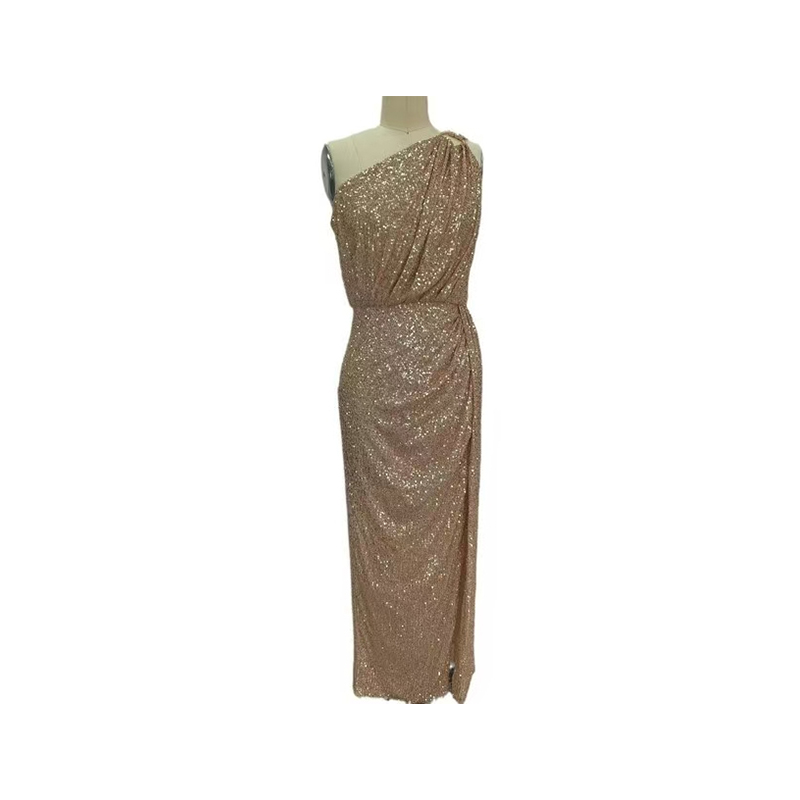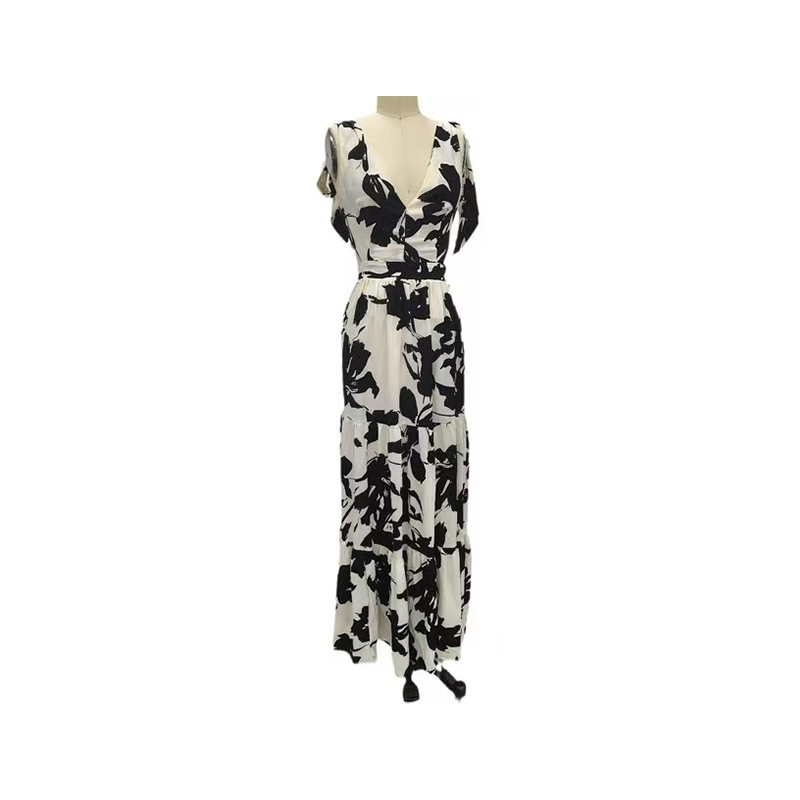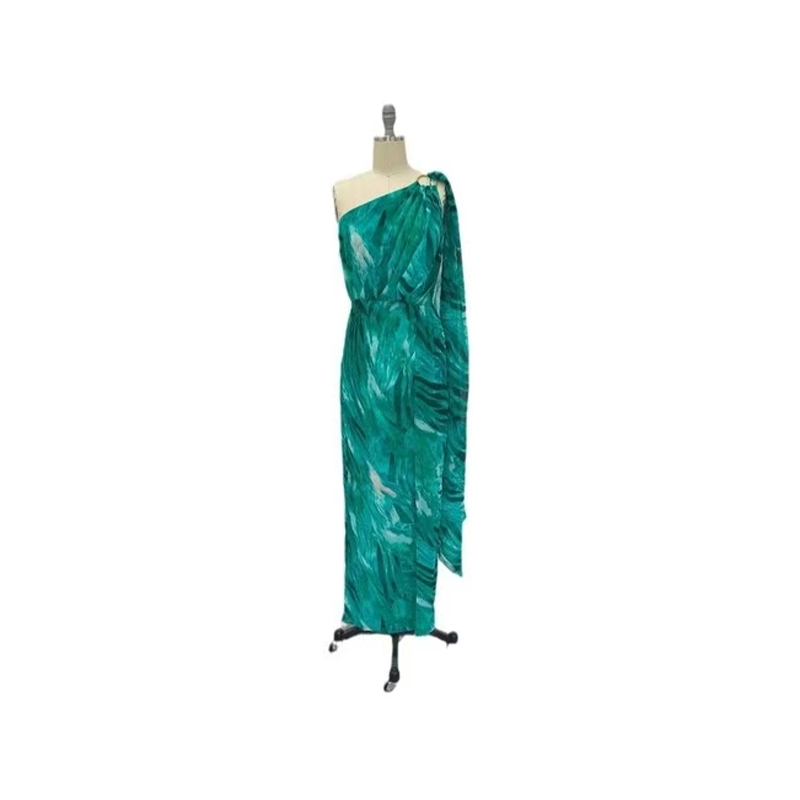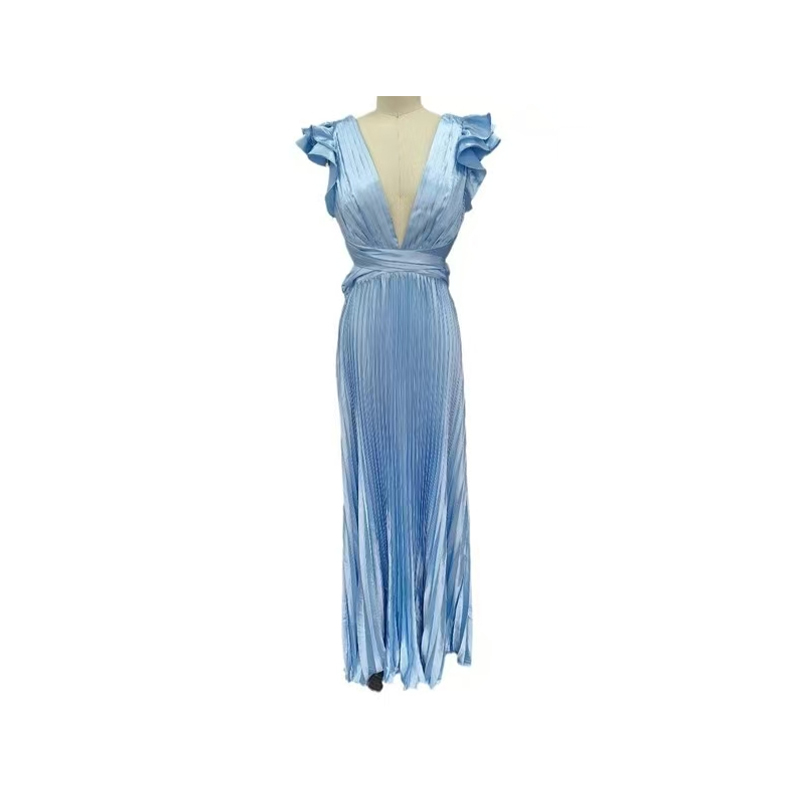How can the back design of a dress (long skirt) balance aesthetics and ease of putting on and taking off?
Release Time : 2025-10-10
The back design of a dress (or long skirt) demands a precise balance between aesthetic appeal and practical functionality. Lines, embellishments, and cuts create an elegant silhouette while ensuring seamless donning and doffing. This design challenge stems from the fact that the back, a highly mobile and visually intensive area of the body, must meet the dual demands of static display and dynamic use.
The choice of back opening is crucial for achieving both aesthetic and convenience. Invisible zippers are a popular choice due to their simplicity. By embedding the zipper into the skirt seam or using teeth in the same color as the fabric, a nearly seamless effect can be achieved. For example, placing the zipper vertically along the midline of the spine maintains a flat back while controlling the length of the zipper—too long can create a loose fit, while too short can restrict range of motion. Furthermore, concealed side zippers break up the rigidity of the central axis, adding a dynamic back shape while preventing the zipper pull from rubbing against the skin.
The use of straps adds flexibility and decorative elements to the back design. Cross-straps can be adjusted to suit different body shapes, and their wrapping can create geometric patterns or a natural drape, enhancing the layered look of the back. For example, thin cord straps are ideal for light summer fabrics, creating a sense of lightness through multiple crosses. Wide fabric straps are suitable for heavier materials in autumn and winter, cinched with a simple knot, securing the skirt and adding a design accent. Adding metal rings or tassels to the ends of the straps transforms a functional element into a focal point, enhancing the overall look.
Moderate use of cutouts can balance skin exposure with a sense of formality. Diamond-shaped or teardrop-shaped cutouts in the center of the back or at the shoulder blades can be used to minimize exposure by controlling the size of the openings, while also highlighting the back's lines through the color contrast between skin and fabric. For example, laser-cutting the edges of the cutouts creates a smooth, fuzzy edge, or lining with tonal tulle creates a hazy effect, maintaining elegance while adding a touch of sensuality. Interplaying the cutouts with the fabric's texture, such as combining them with vertical stripes to extend the vertical visual effect or pairing them with floral prints to enhance a natural feel, can further enhance the design's cohesion.
Fabric properties have a crucial influence on the success of back design. Elastic fabrics like knits and blends can reduce the need for openings through their inherent stretchability, allowing for a simpler back design. In contrast, non-stretch fabrics like cotton, linen, and silk require precise tailoring and openings to ensure movement. For example, a non-stretch dress (long skirt) with an I-shaped pleat at the back uses its elasticity to accommodate body movement while maintaining a drape. The thickness of the fabric also needs to be matched to the opening: lightweight fabrics are suitable for large cutouts, while heavier fabrics require a combination of small openings and three-dimensional tailoring to maintain structure.
Providing movement margins is key to ensuring easy donning and doffing. Back design should account for the pull of the skirt from movements like raising arms and bending. Adding 1-2 cm of allowance at the shoulders and underarms, or using elastic linings, can prevent back tension or twisting during movement. For example, invisible elastic bands embedded in the shoulder seams can secure the skirt in place while allowing it to expand naturally with body movement, ensuring a flat back during donning, doffing, and exercise.
The layout of decorative elements should adhere to the principle of "minority, yet precision." Overly overly embellished back designs, such as extensive embroidery or three-dimensional florals, can easily snag or create a sense of pressure when donning or doffing. Choosing one or two focal points, such as a single pearl buckle or a simple metal chain, enhances sophistication without interfering with functionality. Decorations are typically concentrated in the upper-middle back, avoiding contact with high-chafing areas like the hips and waist while also visually shifting the center of gravity upward to optimize body proportions.
The back design of a dress (long skirt) achieves a harmonious balance of aesthetics and ease of donning and doffing through innovative openings, the clever use of straps and cutouts, the matching of fabric properties, the provision of free movement, and the precise placement of decorative elements. This design approach not only enhances the garment's practicality but also, through the detailed treatment of the back, a "second face," imbues the wearer with a refined elegance from within.







